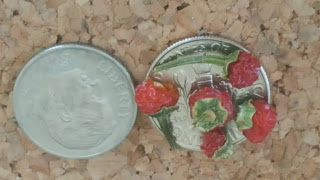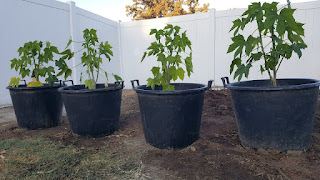ម្ទេសខ្មាំង / Chiltepin (Capsicum annuum var. galbriusculum)
(Capsicum annuum var. Galbriusculum) 'ម្ទេសខ្មាំង' (in Khmer). Also known as Chiltepin, Flea chilles, and Bird pepper. Chiltepin plant is believed to be the prehistoric wild chile plant from which all but two have evolved from, the two being Habanero and Tobacco peppers. Chiltepin plants are still found growing in the wild and is being protected at Coronado National Forest, and a couple of other U.S. national parks. The fruits is tiny but packes with mighty heat, measuring at 50,000 to 1,628,000 on Scoville unit. The tiny ornamental fruits sports a scarlett red color is an attraction for birds. Wild birds is believed to have dispersed seeds across the prehistoric Americas.
- This prehistoric wild chilli is a native to the USA. A state official pepper plant of Texas.
- A perennial in warm regions. Frost sensitive. Given a suitable environment Chiltepin can grow up to over 9ft tall, can live up to 35-50 years old. Found grown in clay or sandy soil.
- Reaching maturity ranging from 75-95 days.
- Chiltepine grow wild from Peru to the soutwestern USA. Historically been used as a remedy for acid-indigestion and as topical application on wounds.
- Fruits are hanging down held with short pedicels, are vibrant green to scarlett red color, and is about 10mm in size slightly larger than an Allspice peppercorns. Round flattened, a shape resemble that of a cherry fruits.
- Green fruit at 40-50 days seemed to produce higher heat. In addition, fruits set during drought season seemed to be produced a weaker heat than those produced during regular rainfall season.
- https://en.m.wikipedia.org/wiki/Capsicum_annuum_var._glabriusculum






Comments
Post a Comment